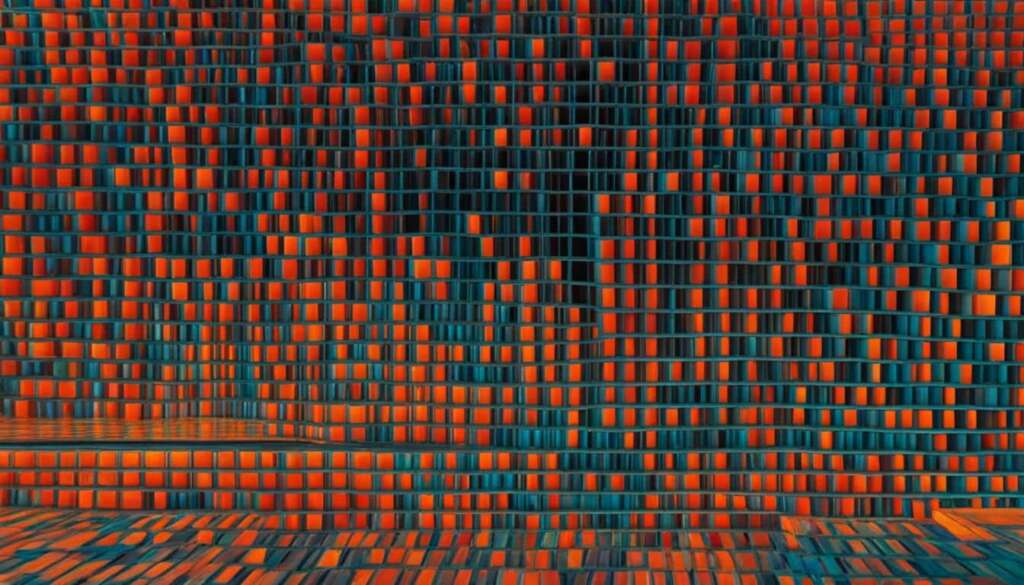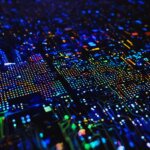Table of Contents
If you’re someone who has ever used modern displays or virtual reality headsets, you might have come across the term “screen door effect.” This visual phenomenon refers to the appearance of black grid-like patterns that resemble a traditional screen door and can affect your overall viewing experience. It has become increasingly relevant in recent times as the usage of virtual reality technology has increased in video games and entertainment.
In this section, we’ll delve into the concept of the screen door effect and how it manifests on various display devices. We’ll explore the implications of this phenomenon on your viewing experience and why it’s essential to understand, especially for avid enthusiasts of VR technology.
Key takeaways
- The screen door effect refers to the visual appearance of black grid-like patterns on various display screens, including virtual reality headsets.
- It can significantly impact your viewing experience by distorting the visuals and reducing immersion.
- The understanding of this phenomenon is crucial, especially for individuals who frequently use VR technology.
What is the Screen door Effect?
The screen door effect is a visual phenomenon that affects modern displays, including smartphones, televisions, and virtual reality headsets. It refers to the appearance of a grid-like pattern of gaps between the pixels on the screen, giving the impression of looking through a screen door or a mesh-like veil. The effect got its name because it resembles the old-fashioned type of screen door commonly found in homes, where wire mesh or grille material blocks the view while allowing air to flow.
The screen door effect occurs because the individual pixels on the screen are separated by black spaces, known as the pixel gap. The larger the gap between the pixels, the more apparent the screen door effect becomes.
It’s worth noting that the screen door effect is more noticeable in devices with low pixel density or resolution. Generally, the higher the pixel count, the less apparent the effect will be.
Origins of the Screen door Effect
The screen door effect first became prominent in the mid-1990s when high-resolution projectors and displays became more widely available. It initially referred to the low-resolution displays of the time that used a visible separation of red, green, and blue elements to produce images. However, the term now refers to a more general phenomenon that occurs regardless of the display type.
Impact on Display Quality
The screen door effect has a significant impact on the clarity and sharpness of images displayed on a screen. It’s especially noticeable in virtual reality headsets, where the screen is positioned much closer to the eyes, making gaps between pixels more visible.
As the name implies, the screen door effect can give the impression that you’re looking through a screen door, which can detract from the realism and immersion of the content you’re viewing.
This visual phenomenon also affects the overall viewing experience by reducing the perceived resolution and sharpness of the displayed content. The screen door effect can make it challenging to distinguish small details, making images appear more pixelated and less realistic.
How Does the Screen Door Effect Impact Your Viewing Experience?
When it comes to displays on modern devices or virtual reality headsets, the screen door effect can be a significant hindrance to the quality of your viewing experience. The screen door effect is a visual phenomenon that creates a grid-like pattern on the screen, which looks like you are viewing the content through a screen door.
This can have a major impact on the clarity and immersion levels of the content you are viewing. For instance, the grid pattern can reduce the sharpness of the image, making it difficult to discern small details. As a result, you may find yourself straining to focus on the content, which can affect both short and long term eyesight.
However, there are steps you can take to improve your viewing experience when dealing with screens affected by the screen door effect. Increasing the resolution of the display or opting for a device with a higher pixel density can lessen the effect somewhat.
In virtual reality headsets, anti-aliasing is used to reduce the effect of the screen door by simulating a higher resolution. By increasing the resolution of the content to be displayed or using hardware such as filters, the grid-like pattern can be reduced, resulting in a more immersive viewing experience.
Conclusion
Understanding the screen door effect and its impact on your viewing experience is crucial when purchasing or using devices with displays. It is a common phenomenon that affects modern screens and virtual reality headsets, causing visual distortions that can reduce the clarity and immersion of the content.
By knowing what the screen door effect is and how it works, you can make informed decisions when selecting devices that offer a better viewing experience. Although there is currently no fool-proof solution to eliminate this effect, future advancements in display technology may offer solutions to minimize or eliminate the screen door effect.
In conclusion, by staying informed about the screen door effect, you can ensure that your viewing experience is the best it can be, and enjoy the highest quality visual content on the devices you use.
FAQ
What is the screen door effect?
The screen door effect refers to a visual artifact that appears as a grid-like pattern resembling a traditional screen door. It is most commonly observed when using devices with displays, such as smartphones, televisions, and virtual reality headsets.
How does the screen door effect impact my viewing experience?
The screen door effect can significantly affect your viewing experience. It reduces the clarity and immersion of the content you are viewing by creating visual distortions and making the display appear less smooth. This can be distracting and diminish the overall enjoyment of the content.
Can the screen door effect be eliminated?
While it is difficult to completely eliminate the screen door effect, advancements in display technology have helped to minimize its impact. Manufacturers are continuously working on improving display resolutions and pixel densities to reduce the visibility of the grid pattern. Additionally, virtual reality headsets with higher pixel densities and improved pixel arrangements are being developed to enhance the viewing experience and lessen the screen door effect.
Are all types of displays affected by the screen door effect?
The screen door effect is more noticeable on displays with lower resolutions and pixel densities. This effect is less pronounced on devices with higher resolution displays, as the individual pixels are smaller and closer together, thereby reducing the visibility of the grid pattern. However, it is still possible to observe the screen door effect to some extent, especially when viewing content up close or in immersive experiences like virtual reality.













